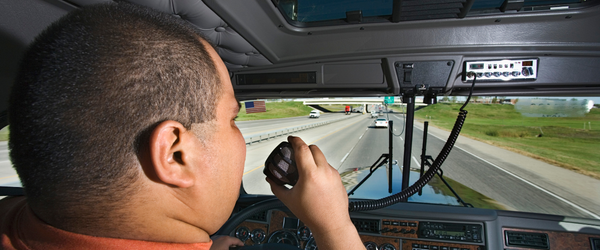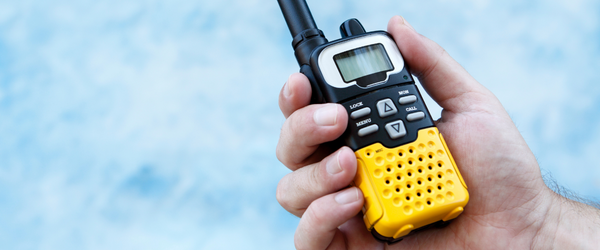While some radios require an FCC license to operate legally, there is also a wide range of personal two-way radios available that operate on specific frequencies and power levels, exempting them from the licensing requirement. These license free radios include CB, Family Radio Service (FRS), Multi-use Radio Service (MURS), Industrial Scientific and Medical (ISM) and Low Power Radio Service (LPRS) offer a simple and effective way for individuals and families to communicate over short distances.
Which Radios Do Not Require an FCC License?
Not all two-way radios require an FCC license. Here are the four types of two-way radios that don’t require an FCC license and can be used right out of the box.
- CB (Citizens Band)
- Family Radio Service (FRS)
- Multi-Use Radio Service (MURS)
- Industrial, Scienific, Medical Radios (ISM)
- Low Power Radio Service (LPRS)
Why is a License Not Required?
The power output (watts) of the radio will determine if you need an FCC license. Two-way radios that are below 2 watts can be used license free. License free, low powered radios are used for short range communication typically 0.5 to a few miles. Any radio above 2 watts will require an FCC license to operate.
CB Radios
Citizens Band (CB) radios do not require an FCC license because they are used for short-distance communication. CB radios operate on 26.965 MHz and 27.405 MHz frequency bands. CB radios operate on 40 channels that are shared and aren’t specific to any person or organization. This type of radio is popular among truckers to communicate with each other on the road.

FRS Radios (Family Radio Service)
FRS Radios, which stand for Family Radio Service, do not require an FCC License. These are small handheld radios such as a walkie talkie and used for short distance communications. FRS two-way radios have 22 channels that operate on 462-467 MHz range. FRS radios can range from 0.5 watts to 2 watts and have a communication range of <.5 mile on channels 8-14 while channels 1-7 and 15-22 can offer a wider range of communication depending on certain conditions.
As the name suggests, FRS radios are used for communication among family, friends, and group activities. Popular FRS radios are those from Midland, DeWalt, Baofeng, select Motorola (Talkabout), or walkie talkies you find at Walmart. There are headsets made by 3M Peltor like the Litecom FRS headset which has a built in FRS two-way radio, which also does not require a license.

Multi-Use Radio Service (MURS)
Multi-Use Radio Service (MURS) do not require a license. Similar to the FRS two-way radio, this radio is also used for short range distance and are small handhelds like a walkie talkie. With this radio, you can expect a communication range of less than a few miles. Multi-Use Radio Service (MURS) operates on channels in 151-154 MHz frequency range.
MURS vs FRS Two-Way Radio
While MURS and FRS two-way radios are both used for short range communications and look like a typical walkie talkie, they are different. Firstly, FRS radios are popular among family and seen a lot of times as “toys” whereas MURS two-way radios aren’t marketed as such. This means the channels on MURS are less crowded compared to FRS channels.
Second, MURS operates on VHF which is better used rural, outdoors, and open terrain while FRS operates on UHF which is best used indoors like in and around buildings.
Lastly, MURS has a better range. FRS radios have a range of less than .5 to 2 miles depending on which channel you are on, while MURS radio can transmit a few miles. MURS radios can also be used with an external antenna giving you an extended range of up to 10 miles or so, something that you can’t do with an FRS radio.
900 Mhz Industrial, Scientific, Medical (ISM)
The FCC has set aside 900 MHz frequency bands for unlicensed ISM (industrial, scientific, and medical) applications. Meaning you won’t need a license to use these radios. Just as the name suggests, ISM applications are used mostly for industrial, scientific, and medical applications. 900 MHz ISM band frequency ranges from 902-928 MHz and is best used when there are obstructions such as trees and buildings in the line of sign. Like the other radios on this list, 900 MHz are typically 1-2 watts which means it doesn’t fall in the requirement for an FCC License.
Popular 900 MHz ISM radios include the Motorola DTR and DLR Series two-way radios.
Low Power Radio Service (LPRS)
Low Power Radio Service (LPRS) is a one-way short distance communication device that does not require an FCC License. LPRS provides auditory assistance to people with disabilities or who need language translations and is used mostly in education, health care, and law enforcement tracking settings. LPRS uses 260 channels with a frequency of 216-217.
What Radios Do Require an FCC License?
- GMRS
- Amateur Radio Service (HAM Radio)
Two-Way Radios listed as General Mobile Radio Service (GMRS) require an FCC license to operate. GMRS radios require a license because they transmit over 2 watts and have a wider communication range of one to 25 miles.
Amateur Radio Service or HAM radios require an amateur operator license grant from the FCC. This process is a little different than what is needed for GMRS radios. For this license grant, you’ll need to pass an examination administered by a volunteer examiner who will determine which operator class you are most qualified for by testing your abilities. For more information on getting a license grant, read this from the FCC.
Why an FCC License is Important
FCC Licenses are used to make sure frequencies are not overlapping with other channels. When you have an FCC license, it gives you your very own set of frequencies to operate on without the risk of interference. If using an unlicensed two-way radio, you can interfere with someone’s registered frequencies which is illegal and can result in fines and penalties.
Don't Run the Risk
If using a two-way radio that requires an FCC license, it’s important to get one before you start communicating. When operating without an FCC license you run the risk of hefty fines, imprisonment, and even have your equipment confiscated. An FCC license is $35 and is valid for 10 years, a small investment to save you from the hassle.
How Can I Get Help Securing an FCC License?
Have a GMRS radio that requires an FCC license? At First Source Wireless, we can help you get one. Visit our applying for an FCC license page for more information.



5 comentários
Joe
To Marjorie: Most ham clubs will want you to have an FCC Amateur Radio Callsign before joining. However, most do welcome non-hams to attend meetings. There, you may get good advice on what equipment to purchase as a beginner or tips on how to study for your first license.
Lynn Magnuson WB7PTR
You do NOT need to join a ham club to study for the amateur license. But the club members in your area will be glad to help you study, club member or not. The test if not really hard but you do need to know the material. It is about radio amateur practices and procedures, radio related law (what you can and can’t do on the radio as a ham), electronic theory related to radio (antennas, how a radio signal acts in different atmospheric conditions, etc.) It’s really quite interesting to learn this stuff.
Marjorie
Larry butler
License for phone walkie-talkie
Tim Johnson
Don’t forget CB radio which is licensed free band on 27 MHz and use 40 channels with AM, FM and SSB.
You can go up 4 watts for AM and FM and 12 watts for SSB.
The ranges varies greatly minimum 5 to 120 miles using groundwave propagation and skywave skips via E layer 400 to 1900 miles or F 2 layers well over 2’000 + miles.
You can use external antenna for extra ranges.
27 MHz is in upper shortwave or called HF for their well known long range communications for amost 60 year now.🙂👍
Hopes this helps!